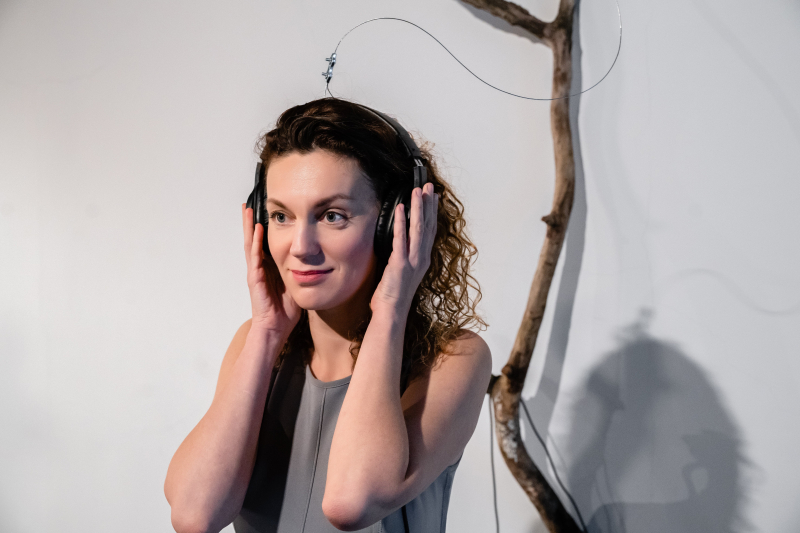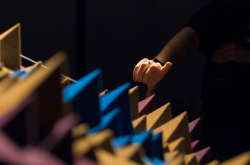The official opening of the exhibition took place online on November 11. Natalia Fedorova and Evgenii Khlopotov, the event's organizers, arranged an online tour and explained the idea of caché dans les bois (hidden in the woods in French). According to Natalia Fedorova, the goal of this exhibition is to help visitors experience nature with the help of accurate, reliable, and scientific data.
“The exhibition’s name is a wordplay. Caché is, on the one hand, something hidden, archaic, or mythological but, on the other hand, it is ‘cache’ – an IT term denoting a part of computer memory that has a higher access speed than the rest of it. The same goes for dans les bois: it translates as ‘in the woods’ but it also means ‘wood’, that is, something industrial. Our exhibition, like its name, is a bioinformational hybrid of biological and digital,” explains Natalia.
The Pangardenia project, which also took place at the AIR art space, taught the organizers how to work with trees and plants. Back then, the project was focused on the garden but now it's about the trees in order to emphasize that they are an essential part of human life on Earth, as well as a safe and exciting study object. A garden is the synthesis of culture and nature, but right now the creators are more interested in studying integration of nature and technology.
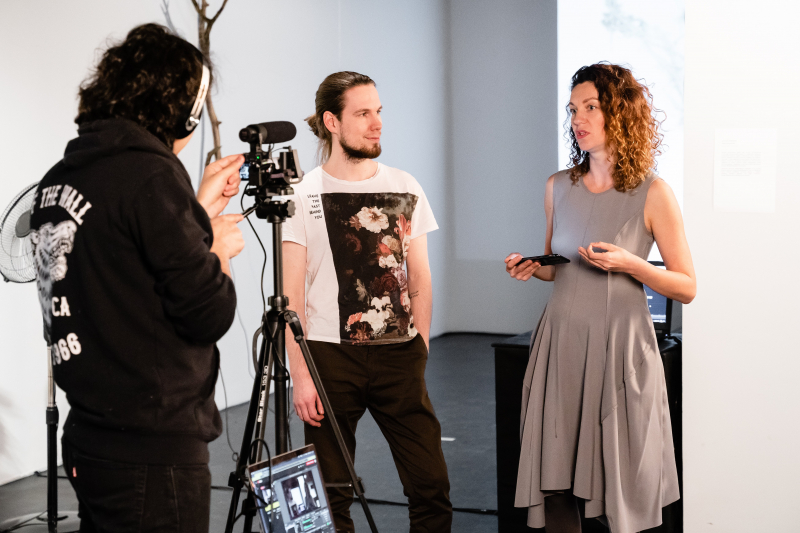
Natalia says that Hidden in the Woods is the first step to a large cultural project dedicated to the study of trees. The exhibition encouraged Olga Kisseleva, an artist and head of the Art & Medium program at the Pantheon-Sorbonne University, to collaborate with the organizers on the upcoming annual project.
“We have many types of data about trees and we want to translate it into human-readable words and images and interpret them in different ways. The technologies help us reveal something that was previously hidden,” comments Natalia. “We really enjoyed this exhibition. We are interested in methods and technologies that artists can use to understand the tree, get inside it, put themselves side by side, and maintain a balance between trees.”
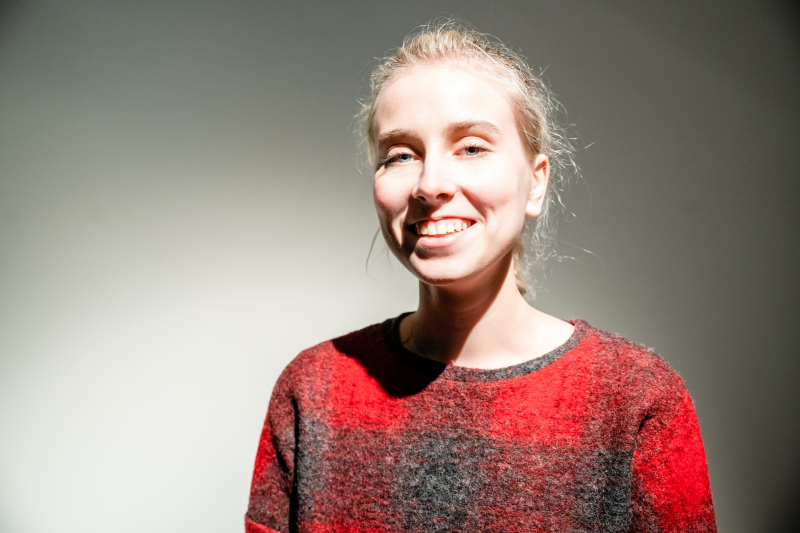
“I think that the theme of our exhibition remains highly relevant, especially this year. Many people are concerned not just about ecology but also about plants and trees for a variety of reasons, for example, when talking about ecosystem service research, climate agenda, or aesthetics. It is a widely discussed topic these days, and we offer our tech art interpretation,” comments the exhibition’s organizer Ksenia Gorlanova.
She stresses that unlike any gallery exhibition, Hidden in the Woods stands out by its educational program that includes a series of lectures, screenings of thematic films, and workshops.
“Typically, an exhibition has a specific topic and is associated with visual content, but we let our audience join lively discussions. This makes the viewers’ experience complete. Plus, it's technological art we're talking about,” she continues.
The exhibitors’ projects
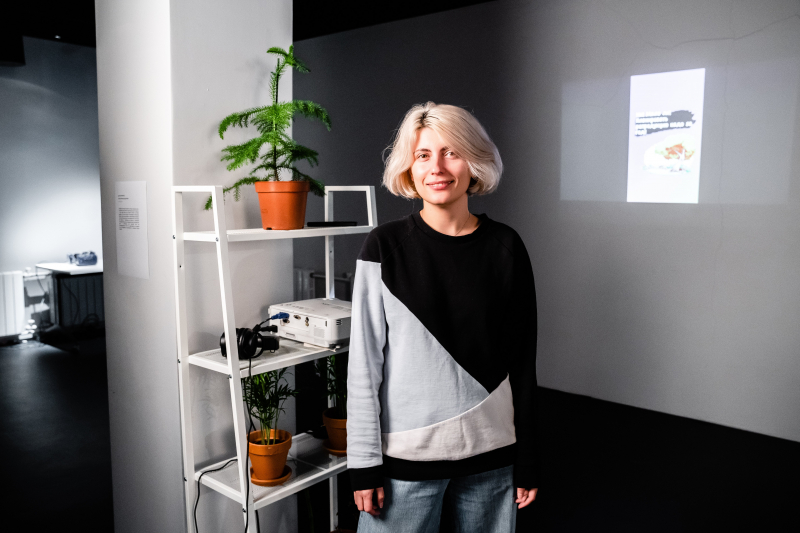
The Hidden in the Woods exhibition presents the works of artists, including students of the Art & Science Master's program at ITMO University. Natalia Fedorova thinks that these art projects are about something that we want to share with trees, what we want to teach them, or something that they can tell us. The curators spoke about some of them at the exhibition’s opening.
The Weeping Birch by Daniil Logvinenko brings together history, art, and technology. For a historical aspect, he displayed the ancient Slavic tradition to hang red ribbons on a birch tree as a sign of a girl's hope to meet her betrothed. But in his interpretation, the birch became the image of a girl and red ribbons represent her hopes. Since birch trees often sprout in sites of mass graves, this works implies that the tree is located on the grave of the girl’s betrothed.
“I wanted to draw attention to turning points in our culture and history using unconventional methods. We can't just be straightforward about tragic things. We can bring them up smoothly and show our affection. I decided to create a musical instrument that makes sound with the help of wind. The ribbons and the birch itself are wind's picks. It is trying to blow us away, but we will withstand it,” explains Daniila. “We track the ribbons with the help of a camera. When they are moving, it's a signal for the recording to play. Once the wind reaches the birch, we hear a girl's voice.”
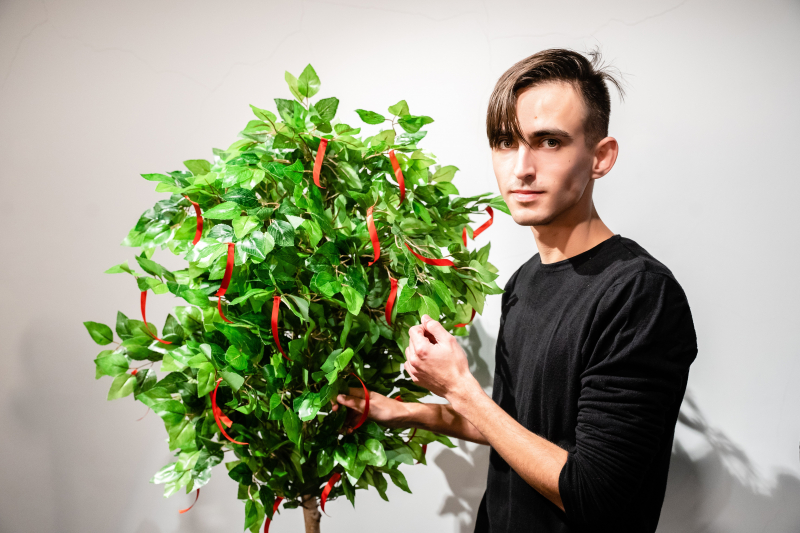
Herbarium by Ekaterina Prianishnikova and Aleksander Serechenko is a kind of imaginarium of plants and trees, their leaves, and branches that is created using neural networks. Two neural networks operate according to the logic of nature. The way trees grow, pollinate, and fruit partially depends on birds. In this project, a nightingale's singing launches the neural network trained on the herbarium. The network produces images of prospective plants. It's like a common imaginarium of neural networks, nightingales, and plants.
The merging of nature and technology can be also seen in the work of Evgenii Khlopotov, an artist and curator of the exhibition. In 2019, he embraced the idea of a dancing forest at the Curonian Spit to begin his own research. He found out that cross-sections of these trees contain mineral magnetite, which has magnetic properties. The soil in the area of the dancing forest also has a special property – a magnetic anomaly that bends trees. Now he is studying the growth of trees: he plants trees and houseplants in soil with fine magnetite and exposes them to a magnetic field. The process of this experiment is presented at the exhibition.
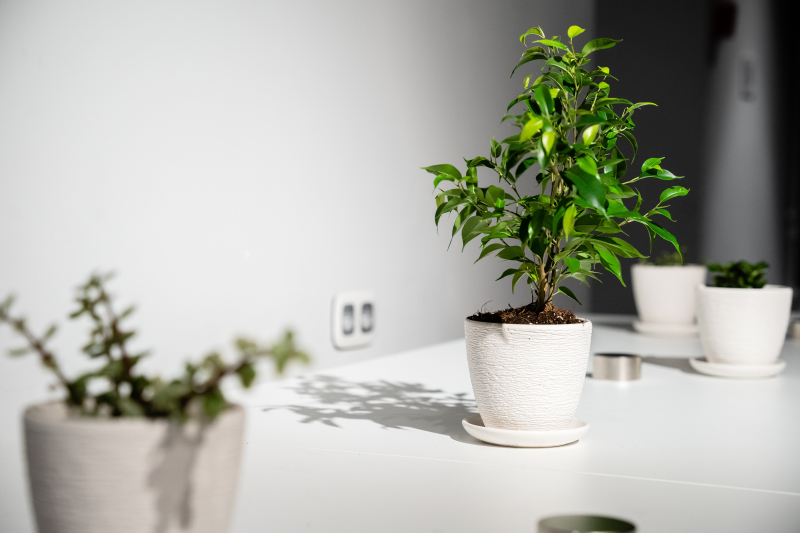
Razzle-dazzle/What Am I Still Waiting For by Stas Bags invites visitors to compare their perceptions of trees with the author’s one. The tree trunk has a temperature of 36.6°C. “You start to see the tree as something equal to you, something that is able to suffer and care. This installation trains your sympathy for trees,” explain the artist.
School of Life for trees by Daria Okhrimenko-Kesler is an installation about “coaching” plants and trees that grow outside the forest.
“They communicate with each other. In the forest, there are the oldest, main trees and growing ones, with which the first share their resources. They exchange signals, as well as smells and nutrients. Daria wondered what was happening to the plants that grow in an apartment. And for them, she created a school for trees. Its program offers videos with separate subtitles for people and plants. The latter are created using ultrasound of root crackling – a natural form of communication for plants in the forest,” Evgenii Khlopotov explains her idea.
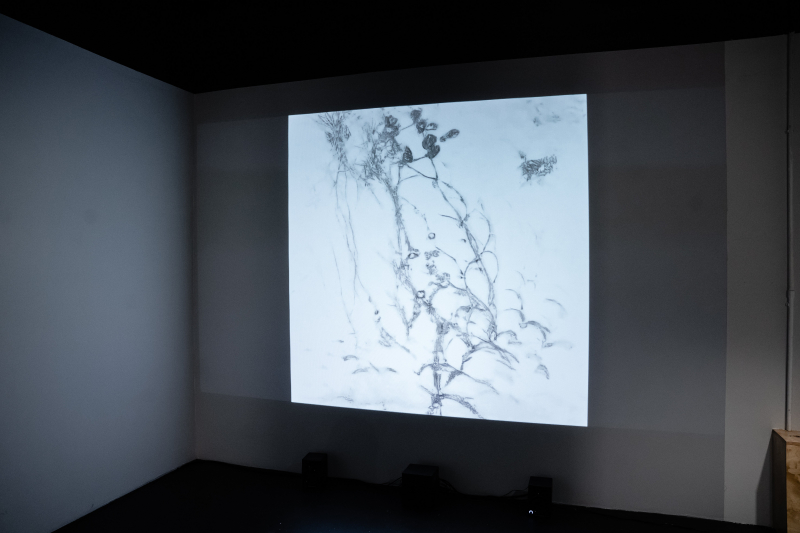
The curators also presented the Eco-Location project by Anastasiia Yatsei. In her research, she managed to listen to the sound of the forest and thus study its sounds landscape with the help of a homemade narrow directional microphone.
The pandemic had not stopped the organizers from holding events in St. Petersburg but they had to restrict the number of participants.
On November 13, there was the opening of Let’s Art & Science! student club, as well as Infochemistry and Dissipative Structures – Prediction and Inspiration lecture by Ekaterina Skorb and a chemical experiment.
The authors of various exhibits gave artists-talk about their projects on November 14, followed on November 15 by Generating Trees workshop by Daniil Logvinenko, What if you want to plant a tree in St. Petersburg? lecture by Nikifor Antsulevich and a screening of Intelligent Trees documentary film, directed by Julia Dordel and Guido Telke.
The upcoming Art Weekend events
The Hidden in the Woods exhibition will end on November 21-22 with a series of events within the Art Weekend – urban events, open days in galleries, exhibition halls, art spaces, and artists' studios. During these days, all visitors will be able to explore contemporary art through lectures, round tables, and discussions.
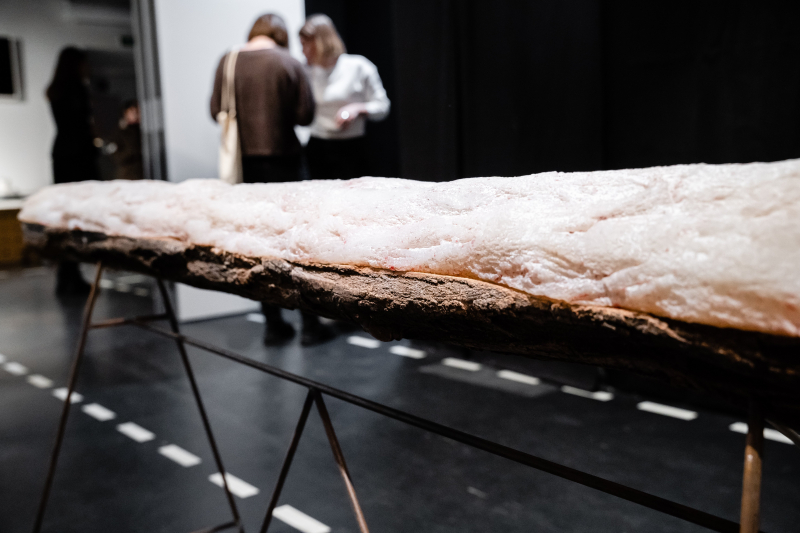
On November 21, a lecture on Green Lab MLA + and a presentation of the Perfect Garden project will be held by the participants of the New Media Laboratory No. 5 of the Alexandrinsky Theatre. The organizers see its mission in showing what an ideal ecosystem is and to create a perfect “green” ecosystem in St. Petersburg.
On November 22, there will be an EDEN lecture by Olga Kisseleva, dedicated to her experience of working with trees, reading about trees, growing different types of trees, and breeding an elm that has overcome the Dutch disease.
The closing of the exhibition will be marked by a screening and discussion of the World Brain film directed by Gwenola Wagon and Stephane Degoutin. According to Natalia Fedorova, the film is a digression on the main program and at the same time its expansion. It's about a fictional system that connects plants and the Internet. The screening will be in French with English subtitles.
All events of the Hidden in the Woods exhibition will be held at Art.ITMO.Residency – the first location in St. Petersburg created for the collaboration of artists and scientists. In order to visit it, register here. The number of seats is limited. Participants can also take part in guided art mediations. More information about the events is available here. You can find the event’s program here and follow the updates and watch broadcasts of past events on the Art & Science Center VK page.
The Hidden in the Woods exhibition is held within the framework of the international cultural and educational project 2nd Curatorial Forum with the support of the ITMO.STUDENTS grant.
